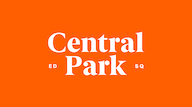Crafting connection
There’s a lot that goes into building a masterplanned community. The location is analysed carefully; open spaces and parklands are incorporated to provide residents with spaces to gather, eat, play and move; and roads, walkways and cycling paths are drawn and redrawn countless times. But while infrastructure and amenity may drive sales, how do you take a group of strangers who have purchased side-by-side homes, and turn them into a community? That’s where Community Development Managers like Michelle Mrzyglocki come in.
Community Development Managers are responsible for planting the seeds of community and nurturing them in the belief that one day, when construction is complete, the community will continue to grow and flourish. “People are busier and more transient these days, we seem to have less of that organic ‘village feel’ that we used to,” says Michelle Mrzyglocki, Community Development Manager at several Frasers Property developments in WA. “So to have that sense of family and security within your community is really important.” The involvement of these experts is most impactful in the early days of a development as the first waves of residents begin to move through the community. Meet your-neighbour barbeques, block parties and large-scale community events are often the first opportunity for a Community Development Manager to connect with residents. Port Coogee resident Trevor Dunn attended a meet-your-neighbours canapé event shortly after he moved into the development.
“It gave us a chance to bond as a community and we all had one thing in common; we loved where we were living and building,”
As a long time Construction Manager, he also appreciated that the initiative was genuinely run for the benefit of the community. “They weren’t overselling, it wasn’t about that,” Trevor explains, “It was about saying ‘you guys are all going to live here together and we’d like you to meet each other’.” It wasn’t long before residents were inspired to form their own community group and started to organise social events of their own. “There’s a neighbourhood Facebook group which is great,” says Trevor. “There’s also First Friday, which is around 35 of us who all bring a dish of food and something to drink and get together on the First Friday of every month.”
Regardless of how well developers execute these early community building events, <strong>Karen Woo, Community Development Manager for Frasers Property</strong> in Victoria says that it’s resident leaders like Trevor that can make or break a community. “I think the strongest communities are the ones that have strong leaders building momentum and bringing everyone along with them,” says Karen. “If they aren’t there then we run the risk of activities falling to the wayside once we leave.” Whether it’s Trevor and the Port Coogee Community Association’s successful campaign to install a walking track from Port Coogee to Fremantle, or Jackie at Baldivis Park transforming her front yard into a fairy garden that delights her littlest neighbours, the power of these residents in creating strong community bonds is undeniable.
But potluck dinners and block parties might not be for everyone. For some residents, the value of a Community Development Manager lies in their connections to the broader community and their abilities to assist in addressing resident concerns. “The good thing about our developments is that they aren’t gated. All of the activities and events are open to everybody, so people make the effort to come and participate,” Karen explains. “It’s really important to us that we actively listen and engage with the entire local community, not just those who purchased their home with us,” says Michelle. “If we can arrive at a place of genuine understanding, we can work together to make changes that are beneficial for everyone.”
Michelle maintains that the future of connected communities is bright. “Fundamentally, I think human beings want to feel connected in a meaningful way,” she explains. “There was a period of time where new developments were quite deliberately more about the individual than the collective. But now there seems to be a big shift happening towards more human-centric design. People are out and connecting and I think there’s a real hunger for that.”
See more articles on










